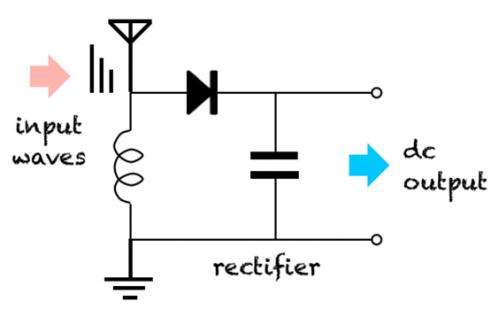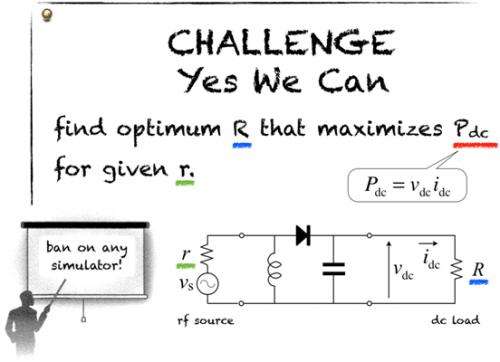Figure 1. Wireless energy harvesting scheme, which equivalently comes down to the closed circuit shown in Fig. 2.
Radio-frequency (RF) wave rectifier circuits play an invaluable role in extracting the appropriate DC voltage and current in wireless energy applications, such as mobile power supplies and environmental energy harvesting.
To squeeze the maximum power from an RF source, circuit designers have to repeat a process of rectifier topology implementation and element parameter optimization for each system. This approach necessitates extensive numerical simulation and computing resources.
Here, Takashi Ohira at Toyohashi Tech. describes the establishment of a set of mathematical formulas that can characterize RF diode rectifiers.
Figure 1 shows a simple example of energy harvesting scheme. Electromagnetic energy arrives at the antenna, is rectified by the diode, smoothed by the capacitor, and output as DC voltage to the load. The designer's primary task is to make the circuit well matched to the load resistance so that the arriving RF energy is not reflected by the diode but fully converted into DC voltage. This problem is mathematically equivalent to that presented by Takashi Ohira in Fig. 2. Adapting Kirchhoff's laws for the diode's nonlinear switching states, imposing the cyclostationary conditions upon the voltage waveform, and taking the current continuity property into account, Takashi Ohira successfully obtained a type of transcendental equation in terms of the diode's flow angle. By solving this equation, Takashi Ohira finally derived expressions for the DC output voltage and current.
The resultant formulas for DC output power show that the source-to-load resistance ratio crucially dominates the circuit behavior. Takashi Ohira consequently derived the optimum source-to-load matching conditions for rectifiers in single-diode half wave, bridged-diode full wave, double-diode double voltage, and double-diode double current operations.
Figure 2. Simple and basic problem that looks easy but involves the essence of RF-to-DC power conversion.
The formulas deduced in this work open up a clear vista for circuit designers in RF power electronics. This approach is much more elegant and insightful than exploring the solution by repeating nonlinear time-domain or harmonic-balance simulations. The theory will pave the way to wireless power transfer for running electric vehicles, air-to-air recharging for electric planes, and even underwater feed stations for motor-driven submarine vessels.
More information: Ohira, T. Power efficiency and optimum load formulas on RF rectifiers featuring flow-angle equations, IEICE Electronics Express, vol. 10, issue 11, pp.1-9, June 2013. DOI: 10.1587/elex.10.20130230
Provided by Toyohashi University of Technology





















